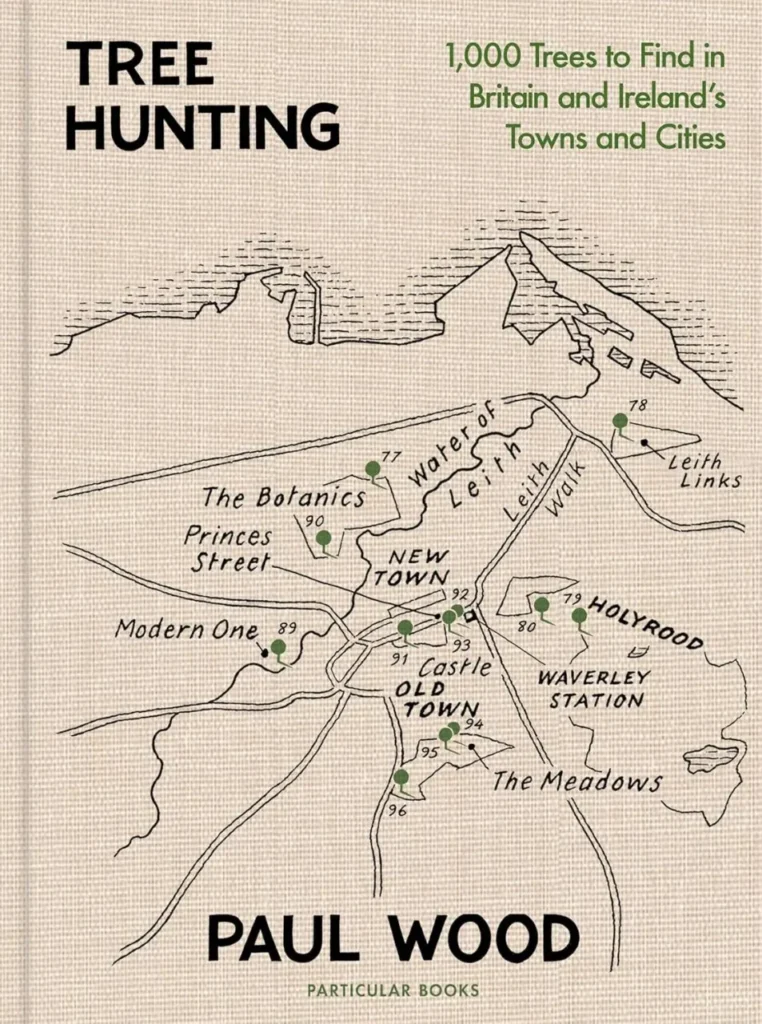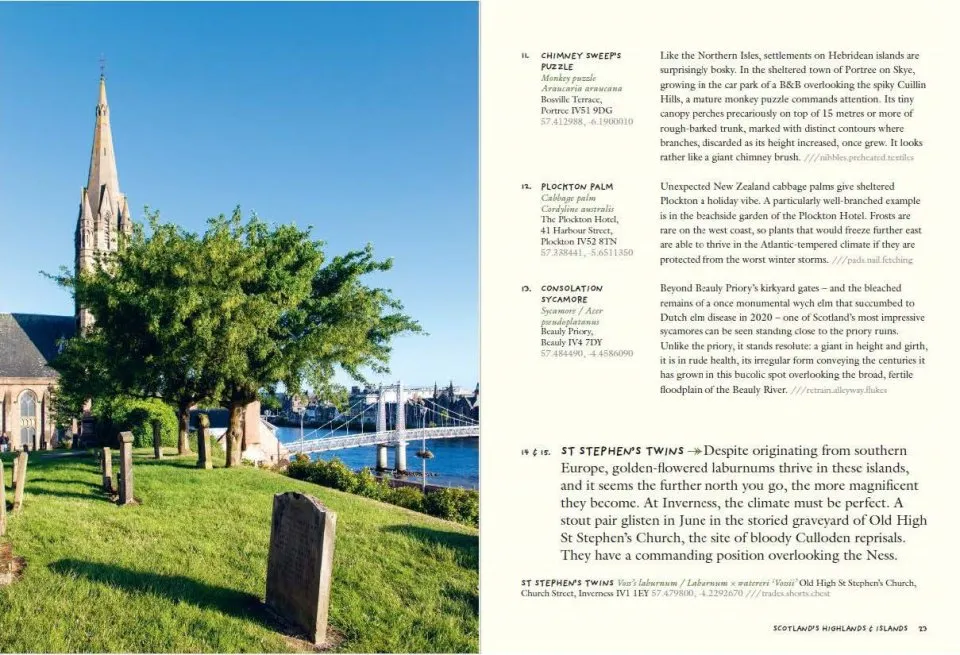Tree Hunting
Paul Wood

Paul Wood has been collecting trees: 1,000 of them. And the result is a Who’s Who directory of trees that shape our towns and cities: Tree Hunting.
Wood has been passionate about all things tree related for a long time and had already produced the London Street Trees guide, now in its third edition. With Tree Hunting, he is inviting us to go out and explore our towns or cities across Britain and Ireland to find the majestic, the quirky, the parochial, the very old or even the rebels that have managed to dodge urban development, for now.
Tree Hunting made me re-discover trees in my own neck of the woods, Manchester. These included Marie Louise’s Chestnut (Tree No 182) in the public gardens of the same name, which count many other beautiful trees. It also made me discover some new ones, such as Effluent Fig, in Salford, where a large fig tree grows on the banks of the River Irwell. Wood surmises that ‘its seed was carried here in human waste, a significant constituent of the river’s water in decades past.’
The book is organised in geographical areas, and there is an overview for each country, region and city, describing how trees have been present and influential in the development of our urban fabric.
Wood highlights botanical aspects as well as the cultural or historical links between people and trees, such as the planting of Manchester poplars, all male trees coming from cuttings of the same plant, to improve the polluted environment of this notorious industrial city in late 19th century, while also providing work to the unemployed around that time.
Each tree has a name, besides its common and scientific names, either what it is referred to locally or if there is no such name what the author thinks would be a suitable moniker. He welcomes hearing about better naming propositions or local knowledge. There are some great photos throughout the book, showing the variety of growing sites, from parks and cemeteries to suburban front gardens, pavement and fence lines. They give a glimpse of how trees and humans have been cohabiting, with sometimes interesting consequences, such as the London Planes taking over red pillar postboxes (Kensington Postbox Tree in London, No 534, and Greedy Tree in Cardiff, No 838).

Clearly, it was not possible to have 1,000 tree mug shots, but the descriptions are cleverly crafted miniature portraits, enticing us to go and meet these various characters. In a few lines, Wood gives an overview of how the tree came about, and why it is of particular interest, just enough to whet our appetite. And so, whilst in Church Stretton, Shropshire, I couldn’t resist a detour to go and find a Sweet Chestnut, called Old Man of the Wood (Tree no 351). Each entry has a postal address, latitude and longitude coordinates and what3words information provided. You are definitely meant to go on the hunt. So I did, and found the Old Man’s jolly face, a real joyful moment. On a practical note, the book is a bit heavy, almost 1kg, so you might want to make notes of the trees you want to see prior to striking out.
Tree Hunting’s vast collection is inspiring. Paul Wood readily accepts that it is not meant as a definitive guide, more as a way to encourage us to see urban trees as more than general greenery, and appreciate how much these living entities are essential to our increasingly urbanised lives. Whether you want to discover new trees in your area, re-acquaint yourselves with some familiar ones or enjoy some tree tourism while on holiday, Tree Hunting is a fun way to discover these living monuments to our towns and cities.
Reviewed by Séverine Cochard
Séverine Cochard is a garden designer and botanist who lives in Manchester.
